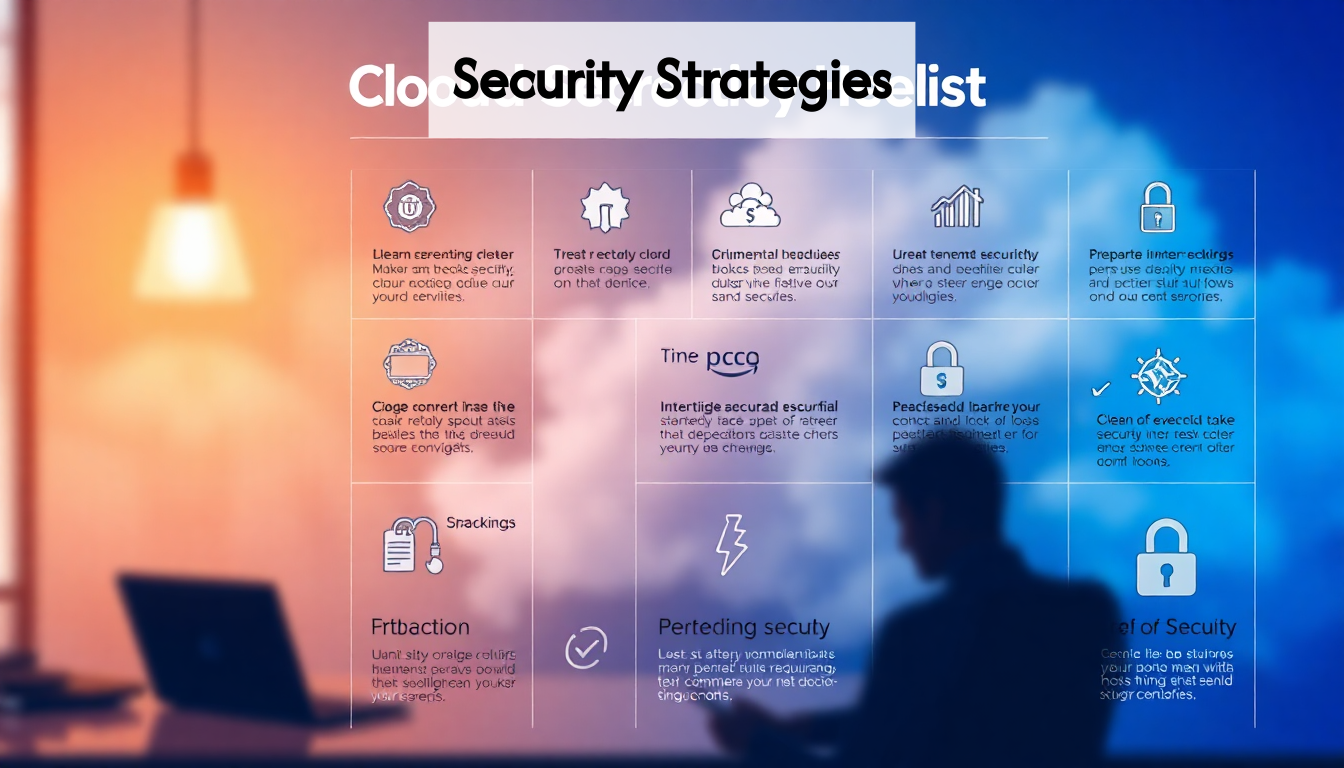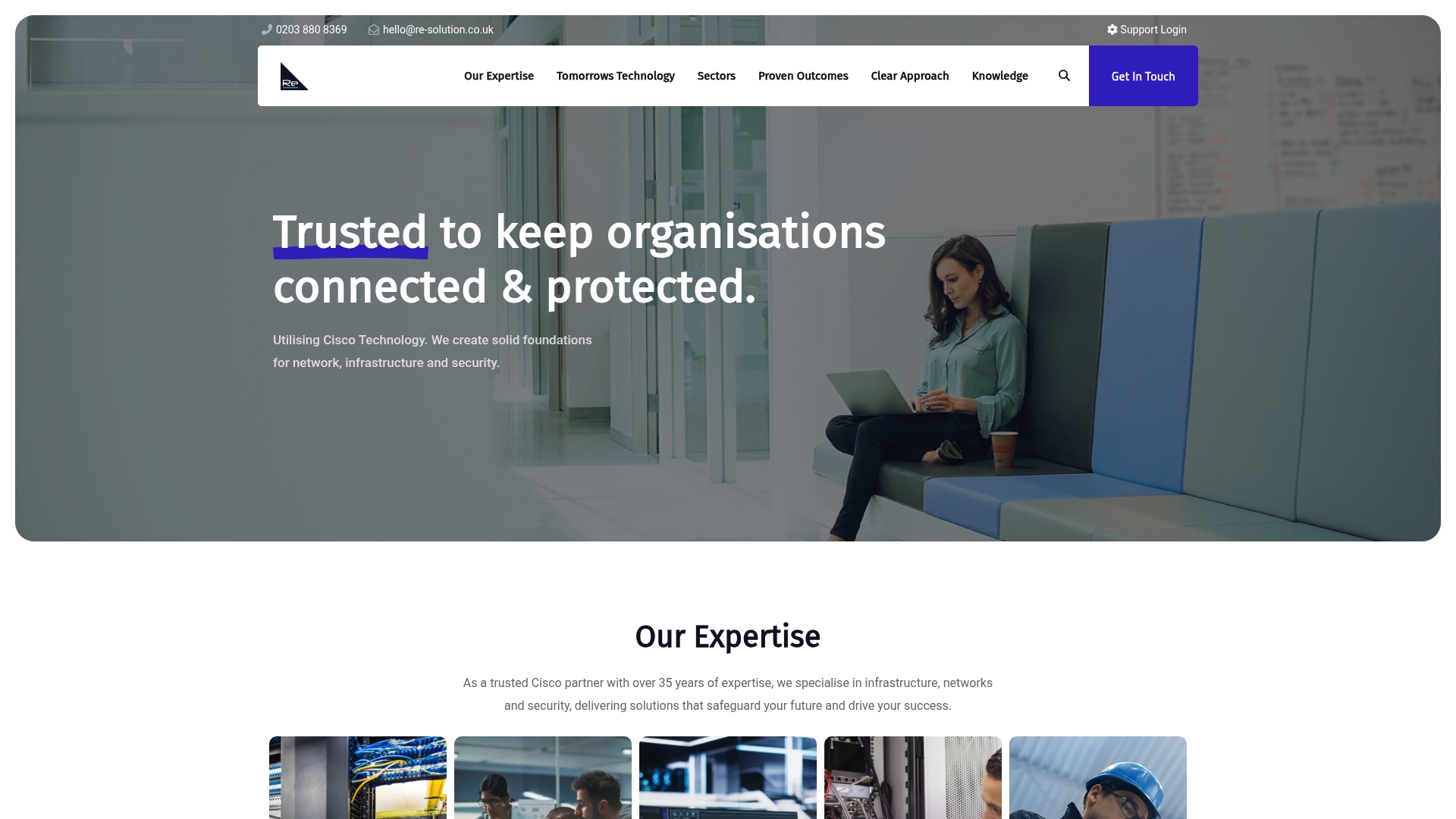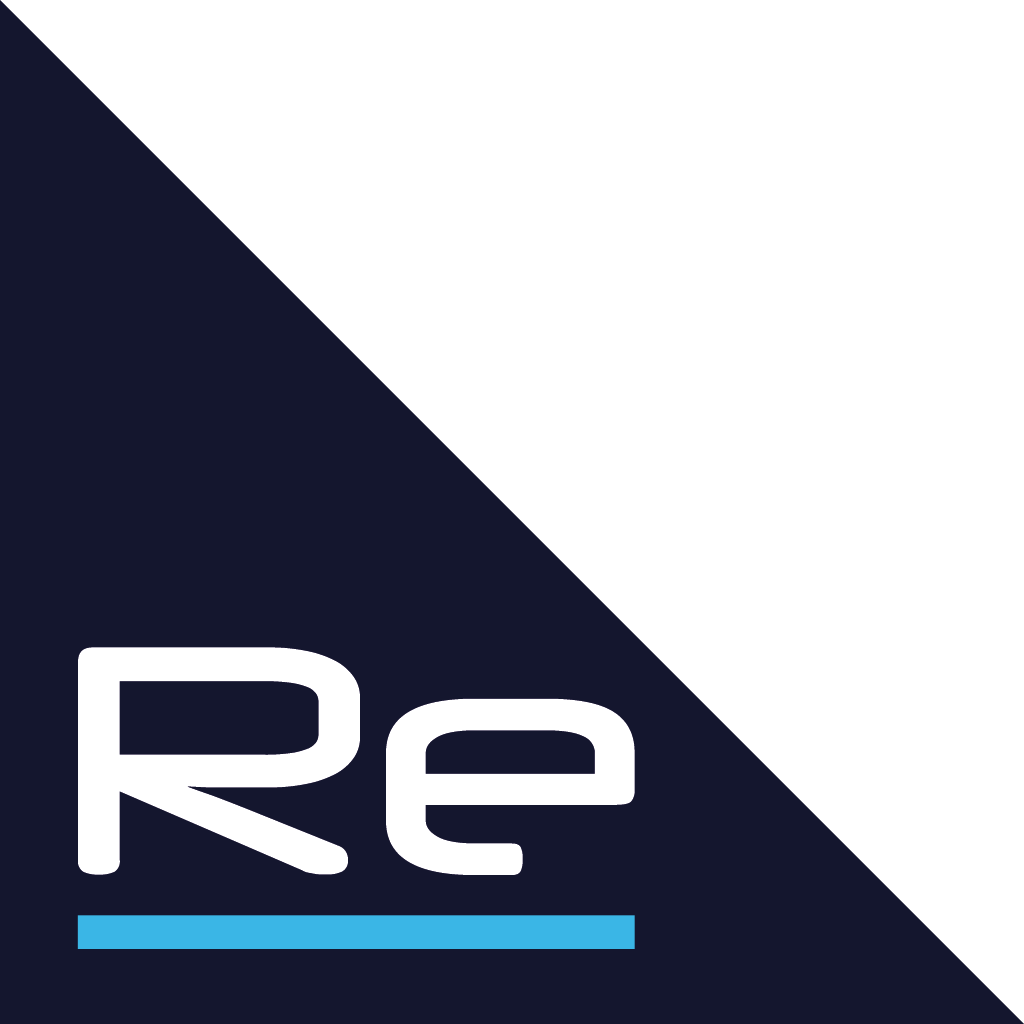
As organisations increasingly migrate their operations to the cloud, implementing robust cloud security measures has become crucial. With a staggering 94% of companies utilising cloud services in 2023, the threat landscape has expanded dramatically, making cloud security a top priority for 93% of organisations. But here’s the twist—the very notion of ‘cloud security’ can be misleading. Many believe that simply choosing a reputable cloud provider guarantees safety. However, the real truth lies in understanding your own responsibilities and how they intertwine with your provider’s. This paradox of shared responsibility is where the journey towards proper cloud security begins, and recognising it could save your organisation from devastating breaches.
Cloud Security Measures: Essential Strategies for Safeguarding Data

As organisations increasingly migrate their operations to the cloud, implementing robust cloud security measures has become non-negotiable. With 94% of companies utilising cloud services in 2023, the attack surface for potential threats has expanded dramatically, making cloud security a top priority for 93% of organisations according to recent studies.
The Shared Responsibility Model
Understanding cloud security begins with recognising the shared responsibility model. This fundamental concept delineates where a cloud provider’s security responsibilities end and where yours begin. Cloud service providers such as AWS, Microsoft Azure, and Google Cloud Platform are responsible for securing the underlying infrastructure—the physical data centres, network architecture, and computing resources. However, as the cloud tenant, you remain responsible for securing your data, applications, access management, and compliance within the cloud environment.
This division of responsibilities means that whilst you can leverage your provider’s security expertise and infrastructure, you cannot outsource your security obligations entirely. Many organisations make the critical mistake of assuming their cloud provider handles all security aspects, leaving their data vulnerable to breaches that could cost an average of £3.5 million per incident.
Essential Cloud Security Strategies
Implementing comprehensive cloud security measures requires a multi-layered approach:
Data encryption stands as the cornerstone of cloud security. Encrypting your data both at rest (in storage) and in transit (during transmission) ensures that even if unauthorised access occurs, the information remains unreadable and protected. Utilising strong encryption protocols like AES-256 for stored data and SSL/TLS for data in transit creates a robust defence against data theft.
Robust identity and access management (IAM) prevents unauthorised access to your cloud resources. This involves implementing the principle of least privilege, where users are granted only the minimum permissions necessary for their roles. Adding multi-factor authentication (MFA) provides an additional security layer, particularly for administrative accounts that could otherwise become single points of failure if compromised.
Regular security audits help identify vulnerabilities before they can be exploited. Automated scanning tools can continuously monitor your cloud environment for misconfigurations, outdated software, or unusual access patterns. These proactive measures are far more cost-effective than addressing breaches after they occur.
Compliance and Governance
Cloud security measures must align with relevant regulatory frameworks that govern your industry. Whether it’s GDPR for European operations, HIPAA for healthcare data, or industry-specific standards like PCI DSS for payment processing, your cloud security strategy must incorporate compliance requirements.
Developing a cloud governance framework helps standardise security practices across your organisation. This includes establishing clear policies for cloud resource provisioning, data classification, incident response, and disaster recovery. Documentation and regular training ensure that all team members understand their roles in maintaining cloud security.
By implementing these essential cloud security measures, organisations can confidently leverage the benefits of cloud computing whilst protecting their most valuable assets—their data and reputation—from increasingly sophisticated cyber threats.
Key Takeaways
| Takeaway | Explanation |
|---|---|
| Understand the Shared Responsibility Model | Clearly define your security responsibilities versus those of your cloud provider to avoid vulnerabilities due to misplaced trust. |
| Implement Comprehensive Security Measures | Adopt a multi-layered approach including data encryption, robust IAM policies, and regular security audits to safeguard data effectively. |
| Focus on Compliance and Governance | Align your cloud security strategy with relevant regulatory frameworks and develop a governance framework to standardise practices across your organisation. |
| Regularly Identify and Address Vulnerabilities | Use automated tools for continuous monitoring and penetration testing to uncover and remediate vulnerabilities promptly. |
| Enhance Access Controls | Employ the principle of least privilege and multi-factor authentication to minimise the risk of unauthorised access to sensitive data. |
Identifying Cloud Security Vulnerabilities
Proactively identifying vulnerabilities is a critical component of maintaining robust cloud security measures. With nearly 4,000 new cyberattacks occurring daily and organisations falling victim to ransomware every 14 seconds according to security researchers, understanding where your cloud environment might be exposed is essential to preventing costly breaches.
Common Vulnerability Points
Misconfigurations represent one of the most prevalent cloud security vulnerabilities. Unlike traditional on-premises environments, cloud infrastructure is often provisioned rapidly through configuration files and APIs, making it susceptible to human error. Something as simple as an improperly configured storage bucket or excessive permissions can expose sensitive data to the public internet. These vulnerabilities are particularly dangerous because they often remain undetected until after a breach has occurred.
Insecure APIs and interfaces present another significant vulnerability. As the connective tissue of cloud environments, APIs serve as gateways to your data and services. Inadequately secured APIs—those lacking proper authentication, encryption, or access controls—can provide attackers with direct routes to your most sensitive assets. This risk is amplified when organisations rely on third-party APIs without conducting thorough security assessments.
Identity and access management (IAM) weaknesses continue to plague cloud environments. Excessive permissions, inadequate credential management, and lack of multi-factor authentication create opportunities for credential theft and privilege escalation. In cloud environments, where a single compromised account could potentially access multiple services, the principle of least privilege becomes even more crucial than in traditional networks.
Tools and Techniques for Vulnerability Assessment

Cloud security posture management (CSPM) tools have become indispensable for identifying misconfigurations and compliance issues across cloud environments. These automated solutions continuously scan your cloud infrastructure against best practices and compliance frameworks, alerting you to potential vulnerabilities before they can be exploited. Most major cloud service providers offer native CSPM capabilities, while third-party solutions can provide more comprehensive multi-cloud coverage.
Penetration testing specifically tailored to cloud environments helps identify vulnerabilities that automated tools might miss. Unlike traditional penetration testing, cloud-focused assessments require specialised knowledge of cloud service provider architectures and unique attack vectors. These tests should evaluate both the infrastructure configuration and the security of custom applications deployed in your cloud environment.
Continuous monitoring systems that analyse logs and network traffic can detect anomalous behaviour indicating potential security incidents. By establishing baselines of normal activity and monitoring for deviations, these systems can identify attackers who may have already breached your initial defences. Integration with security information and event management (SIEM) platforms enhances this capability by correlating events across your entire cloud footprint.
Vulnerability Management Process
Effective vulnerability management in cloud environments requires a structured, ongoing process rather than periodic assessments. Begin by maintaining a comprehensive inventory of all cloud assets and their configurations. Without this visibility, vulnerabilities in forgotten or shadow IT resources may remain unaddressed.
Prioritisation becomes essential when facing numerous vulnerabilities across complex cloud environments. Focus remediation efforts on vulnerabilities that present the highest risk based on factors such as exposure to the internet, sensitivity of affected data, and ease of exploitation. This risk-based approach ensures that limited security resources address the most critical issues first.
Finally, implement automated remediation workflows where possible. Many cloud security vulnerabilities, particularly misconfigurations, can be corrected through automated processes triggered by detection events. This approach significantly reduces the time between vulnerability identification and resolution, minimising the window of exposure to potential attackers.
By systematically identifying and addressing these vulnerabilities, organisations can substantially strengthen their cloud security posture and reduce the likelihood of costly breaches.
Implementing Robust Access Controls
Access controls form the cornerstone of effective cloud security measures, acting as gatekeepers that protect your sensitive data and critical systems from unauthorised access. With 98% of organisations reporting vulnerability to insider threats and negligence responsible for 60% of data breaches according to security research, implementing robust access controls is essential for maintaining the integrity of your cloud environment.
The Principle of Least Privilege
At the heart of effective access control lies the principle of least privilege (PoLP), which dictates that users and systems should only have access to the resources and data necessary to perform their specific functions—nothing more. This foundational principle dramatically reduces your attack surface and limits the potential damage from compromised accounts.
Implementing least privilege in cloud environments requires thorough analysis of job functions and corresponding access requirements. Begin by documenting roles within your organisation and mapping them to specific cloud resources and actions. This exercise often reveals instances of excessive permissions that have accumulated over time, particularly in rapidly evolving cloud deployments.
Regular access reviews are essential for maintaining least privilege. As roles change and employees move between departments, their access requirements shift accordingly. Automated tools that scan for unused permissions and dormant accounts can help identify access rights that should be revoked, preventing privilege creep that gradually undermines your security posture.
Multi-Factor Authentication
Whilst strong password policies remain important, passwords alone are insufficient protection for cloud resources. Multi-factor authentication (MFA) adds a crucial additional security layer by requiring users to provide at least two verification factors: something they know (password), something they have (authentication app or security key), or something they are (biometric verification).
MFA should be mandatory for all accounts with access to your cloud environment, with particular emphasis on administrative accounts that could cause significant damage if compromised. Modern cloud platforms offer native MFA capabilities that can be easily enabled, making this one of the most cost-effective security controls available.
For particularly sensitive systems, consider implementing risk-based authentication that adjusts security requirements based on contextual factors such as location, device, and behaviour patterns. This adaptive approach balances security with user experience by applying stricter verification only when suspicious activity is detected.
Role-Based Access Control Models
Structuring your access management around defined roles rather than individual permissions significantly simplifies administration whilst enhancing security. Role-based access control (RBAC) allows you to create standardised permission sets aligned with specific job functions, ensuring consistent access policies across your organisation.
When implementing RBAC in cloud environments, carefully design your role hierarchy to balance granularity with manageability. Roles that are too broad may violate least privilege, whilst excessive specialisation creates administrative overhead. Most organisations benefit from a tiered approach with broad functional roles (developer, analyst, administrator) further refined by department, project, or environment (production, testing, development).
Supplementing RBAC with attribute-based access control (ABAC) provides additional flexibility for complex environments. ABAC considers multiple attributes—such as time of day, location, or resource sensitivity—when making access decisions, enabling more nuanced policies than RBAC alone can provide.
Privileged Access Management
Privileged accounts with elevated permissions represent the most significant risk in your access control framework. These accounts—which include cloud service administrators, database administrators, and security team members—require special handling through privileged access management (PAM) solutions.
Effective PAM implementations include just-in-time access provisioning, where elevated privileges are granted only when needed and automatically revoked after a predetermined period. This approach drastically reduces the window during which these powerful accounts could be misused or compromised.
Session monitoring and recording for privileged activities provides accountability and creates a deterrent against internal threats. These recordings also serve as valuable resources for incident investigations and compliance audits, providing a definitive record of who did what within your cloud environment.
By methodically implementing these access control strategies, you create a robust defence against both external attackers and insider threats. The structured approach not only enhances security but also simplifies compliance with regulatory requirements that increasingly emphasise access management as a critical control.
Selecting Cloud Security Tools
As cloud adoption accelerates, with cloud IT infrastructure spending projected to reach nearly US$94 billion in 2023, organisations face the challenge of selecting appropriate security tools to protect their expanding cloud footprint according to industry forecasts. The right combination of cloud security tools can dramatically enhance your protection against evolving threats while simplifying management across complex environments.
Understanding Cloud Security Tool Categories
Cloud security tools generally fall into several distinct categories, each addressing specific security needs. Understanding these categories is essential for building a comprehensive security strategy without unnecessary duplication or gaps in coverage.
Cloud Security Posture Management (CSPM) tools provide continuous monitoring and assessment of your cloud environment against security best practices and compliance frameworks. These solutions automatically detect misconfigurations, policy violations, and security gaps across your cloud infrastructure. The preventative approach of CSPM represents a significant evolution from traditional reactive security measures, allowing organisations to identify and remediate potential vulnerabilities before they can be exploited.
Cloud Workload Protection Platforms (CWPP) focus on securing the applications and workloads running in your cloud environment. These tools provide runtime protection through capabilities such as vulnerability management, file integrity monitoring, and application control. Modern CWPP solutions are designed to adapt to hybrid and multi-cloud architectures, making them particularly valuable for organisations operating across diverse environments.
Cloud Access Security Brokers (CASB) serve as security policy enforcement points between cloud service consumers and providers. These tools provide visibility into cloud usage, enforce data security policies, and ensure compliance. CASBs are especially valuable for organisations concerned about shadow IT and unauthorised cloud services, as they can identify and control cloud services being used without formal approval.
Cloud Detection and Response (CDR) tools represent the evolution of traditional security monitoring for cloud environments. These solutions provide advanced threat detection, investigation, and response capabilities specifically designed for cloud infrastructure and services. By continuously analysing cloud logs, network traffic, and user activity, CDR tools can identify sophisticated attacks that might evade traditional security controls.
Key Selection Criteria
When evaluating cloud security tools, several critical factors should guide your decision-making process:
Multi-cloud support has become increasingly important as organisations adopt services from multiple providers. Select tools that provide consistent protection and unified management across all your cloud environments to avoid security gaps and reduce operational complexity. This becomes particularly crucial as your cloud strategy evolves and potentially incorporates additional providers.
Integration capabilities determine how effectively a security tool will function within your broader security ecosystem. Prioritise solutions that offer robust APIs and pre-built integrations with your existing security infrastructure, including SIEM systems, ticketing platforms, and identity providers. Strong integration enables automated workflows and comprehensive visibility across your security operations.
Automation and remediation features can significantly reduce the operational burden on security teams. Look for tools that not only detect issues but can also automatically implement remediation actions based on predefined policies. This capability is particularly valuable for addressing common misconfigurations and compliance violations that might otherwise require manual intervention.
Compliance support is essential for organisations operating in regulated industries. Evaluate whether potential tools include built-in frameworks for standards relevant to your business, such as GDPR, HIPAA, PCI DSS, or ISO 27001. The ability to generate compliance reports and evidence can streamline audits and demonstrate due diligence to regulators.
Implementation Considerations
Successful implementation of cloud security tools requires thoughtful planning beyond the selection process itself.
Begin with a thorough assessment of your specific requirements based on your cloud architecture, compliance obligations, and existing security controls. This baseline understanding helps prioritise capabilities and avoid unnecessary complexity or expenditure on features that don’t address your actual risks.
Consider the total cost of ownership rather than just license fees. Factor in implementation costs, ongoing maintenance, training requirements, and potential productivity impacts. Some tools may have higher upfront costs but lower operational overhead, making them more economical in the long term.
Scalability becomes increasingly important as your cloud footprint grows. Select tools designed to scale with your environment without significant performance degradation or additional complexity. This is particularly relevant for organisations with rapid growth trajectories or fluctuating resource requirements.
Finally, evaluate the vendor’s security posture and practices. Your security tools should not introduce new vulnerabilities into your environment. Review the vendor’s own security certifications, incident response capabilities, and update frequency to ensure they maintain appropriate security standards.
By systematically evaluating cloud security tools against these criteria and understanding the specific capabilities of each category, you can build a robust security toolset that addresses your organisation’s unique cloud security requirements while optimising resource utilisation.
Maintaining Cloud Compliance Standards
Compliance is no longer just a checkbox exercise but a critical component of cloud security measures. With Gartner predicting that over 95% of new digital workloads will be deployed on cloud-native platforms by 2025 according to recent reports, organisations must navigate an increasingly complex regulatory landscape whilst maintaining the agility that cloud computing provides.
Understanding Your Compliance Obligations
The first step in maintaining cloud compliance is identifying which regulations apply to your organisation based on your industry, geographical operations, and the types of data you process. These regulatory frameworks often overlap and may include:
General Data Protection Regulation (GDPR) affects any organisation processing EU citizens’ personal data, regardless of where the organisation is based. Its requirements extend to how data is collected, processed, stored, and protected in cloud environments, with potential fines reaching up to 4% of global annual turnover for serious violations.
Health Insurance Portability and Accountability Act (HIPAA) governs protected health information (PHI) in the United States and imposes strict requirements on healthcare providers, insurers, and their business associates. When migrating health data to the cloud, organisations must ensure appropriate safeguards are in place, including encryption, access controls, and audit logging.
Payment Card Industry Data Security Standard (PCI DSS) applies to all entities that store, process, or transmit cardholder data. Cloud environments handling payment information must adhere to specific security requirements, including network segmentation, encryption, and vulnerability management.
Industry-specific regulations such as FedRAMP for government agencies, SOX for publicly traded companies, and FINRA for financial institutions impose additional compliance requirements that must be factored into your cloud security strategy.
Implementing a Compliance Framework
Meeting these diverse compliance requirements necessitates a structured approach:
Document your compliance architecture by mapping regulatory requirements to specific cloud security controls. This documentation should clearly demonstrate how each compliance obligation is addressed within your cloud environment, creating a defensible position during audits and assessments.
Leverage compliance-focused cloud configurations that align with specific regulatory frameworks. Many cloud service providers offer pre-configured templates designed to meet common compliance standards, significantly reducing the effort required to establish a compliant baseline environment.
Implement continuous compliance monitoring to detect and remediate drift from your compliance baseline. Manual point-in-time assessments are insufficient in dynamic cloud environments where configuration changes occur frequently. Automated tools can continuously evaluate your cloud posture against compliance requirements, alerting you to potential issues before they become audit findings.
Establish clear data governance policies that define how data should be classified, stored, processed, and protected in the cloud. These policies should address data residency requirements, retention periods, and appropriate security controls based on data sensitivity.
The Shared Responsibility Model in Compliance
Whilst cloud service providers offer compliant infrastructure and services, the responsibility for maintaining compliance is shared. Understanding this division of responsibilities is crucial:
Cloud provider responsibilities typically include physical security, infrastructure compliance, and securing the underlying platform. Major providers maintain certifications against numerous standards (ISO 27001, SOC 2, etc.) and offer compliance documentation to support your own compliance efforts.
Customer responsibilities generally encompass data classification, access management, application security, and ensuring that your specific usage of cloud services aligns with relevant regulations. Even when using compliant cloud services, improper configuration or implementation can create non-compliance.
Contractual agreements such as Business Associate Agreements (BAAs) for HIPAA or Data Processing Agreements (DPAs) for GDPR formalize the division of compliance responsibilities and should be carefully reviewed to ensure they meet your regulatory requirements.
Audit and Evidence Collection
Demonstrating compliance to auditors and regulators requires comprehensive evidence collection:
Implement robust logging and monitoring across your cloud environment to track access to sensitive data, configuration changes, and security events. These logs serve as essential evidence during audits and investigations.
Conduct regular compliance assessments using both internal resources and third-party auditors. These assessments should evaluate your actual cloud environment against your documented compliance requirements, identifying gaps requiring remediation.
Maintain an evidence repository containing documentation of security controls, risk assessments, policy enforcement, and remediation activities. This repository should be organised by compliance framework to streamline audit preparation.
Develop compliance reporting that translates technical data into meaningful compliance metrics for stakeholders. These reports should highlight compliance status, risk exposure, and remediation progress in business-relevant terms.
By taking this structured approach to cloud compliance, organisations can confidently embrace cloud technologies whilst maintaining regulatory compliance and protecting sensitive data. The key lies in treating compliance not as a periodic hurdle but as an ongoing aspect of your cloud security strategy, continuously monitored and refined as both your cloud environment and the regulatory landscape evolve.
Frequently Asked Questions
What are cloud security measures?
Cloud security measures are strategies and technologies employed to protect data, applications, and systems in cloud environments from unauthorised access, data breaches, and other cyber threats.
What is the shared responsibility model in cloud security?
The shared responsibility model delineates the security obligations of cloud service providers and their customers. Providers secure the underlying infrastructure, while customers are responsible for securing their data, applications, and user access within the cloud environment.
How can I improve my cloud security?
You can improve your cloud security by implementing data encryption, robust identity and access management, regular security audits, and ensuring compliance with relevant regulatory frameworks.
Why is compliance important in cloud security?
Compliance is crucial in cloud security because it helps organisations adhere to regulatory requirements, mitigates legal risks, and protects sensitive data from breaches, ultimately safeguarding the organisation’s reputation.
Secure Your Cloud Journey with Re-Solution
Navigating the complexities of cloud security can be daunting. With 70% of companies experiencing breaches due to misconfigurations and inadequate access controls, it’s clear that understanding the shared responsibility model is crucial to safeguarding your most valuable assets. But how do you ensure that your organisational security measures are up to par?

At Re-Solution, we specialise in bridging the gap between your cloud ambitions and your current security realities. Our managed IT services and comprehensive security solutions are designed to empower you with tailored measures that align perfectly with your unique infrastructure needs. Imagine a partner that not only understands the urgency of your compliance requirements but actively works with you to achieve them—ensuring peace of mind and the robust protection of your data.
Don’t wait until vulnerabilities become costly breaches. Take action today and explore how our Network as a Service and expert infrastructure audits can fortify your cloud security posture. Visit us at https://re-solution.co.uk to discover the true strength of secure, compliant, and future-ready cloud solutions tailored just for you!
